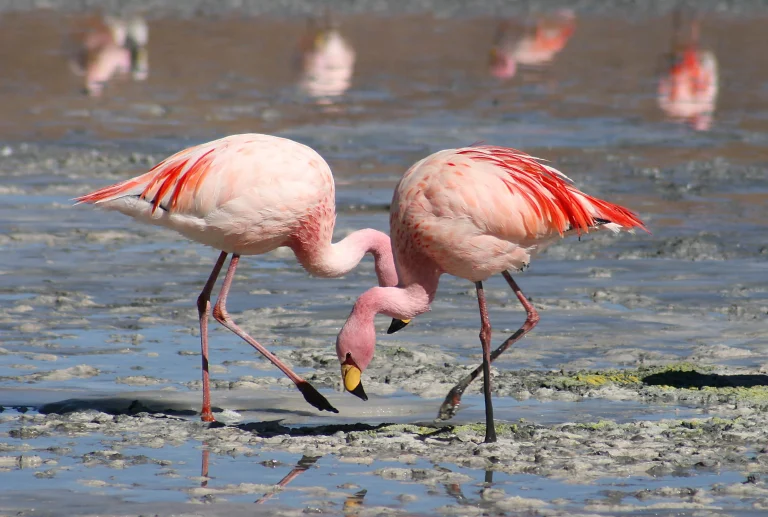Black Diamond Watermelon, with its alluring dark green exterior and juicy, ruby-red interior, stands as a symbol of nature’s bounty. Cultivating this exquisite fruit requires a deep understanding of the intricacies involved in planting, caring, harvesting, pruning, growing from seeds, and managing pests and diseases. In this comprehensive guide, we will navigate through each stage of the Black Diamond Watermelon’s life cycle, unraveling the secrets that lead to a flourishing harvest.
Planting
When to Plant
Plant Black Diamond Watermelon when the danger of frost has passed and soil temperatures consistently reach at least 70°F (21°C). The optimal planting time is in late spring to early summer, ensuring a warm and frost-free environment for germination and growth. Aim for a growing season that is long enough to allow the watermelons to mature, typically around 80 to 90 days. Adjust the planting time based on your specific region and local climate, seeking guidance from local agricultural experts or extension services. With these considerations, you can maximize the chances of a successful Black Diamond Watermelon harvest.
Where to Plant
The journey of cultivating this Watermelon begins with selecting the perfect site. These sun-loving plants thrive in well-drained soil, basking in the full glory of sunlight. Opt for a location with a southern exposure to ensure that the vines receive abundant sunlight throughout the day.
Preparing the Soil
The foundation of successful cultivation lies in soil preparation. These Watermelons favor slightly acidic to neutral soil with a preferred pH range of 6.0 to 7.0. Enhance the soil with organic matter to foster a nutrient-rich environment and ensure proper drainage, laying the groundwork for robust growth.
Sowing the Black Diamond Watermelon Seeds
There are two methods for sowing the seeds, Whether you choose direct sowing or starting seeds indoors, the depth of planting plays a pivotal role. Plant the seeds at a depth of approximately 1 inch, allowing them ample space to germinate and emerge. Maintain a spacing of 3 to 4 feet between each hill to provide the sprawling vines with the room they need to thrive.
When it comes to planting the Watermelon seeds, precision is key. Follow these steps for optimal results
Spacing: Maintain a spacing of 3 to 4 feet between each hill. This generous spacing allows the sprawling vines of Black Diamond Watermelon to expand without overcrowding.
Hill Formation: Consider planting the seeds in hills or mounds. This promotes better drainage and aids in warming the soil, especially in cooler climates.
Growing of the Seeds
The growth of the Watermelon begins with the tiny, yet powerful, seed. For an indoor start, sow the seeds 2-4 weeks before the last expected frost. Keep the soil consistently moist until the seedlings emerge, ensuring they are placed in a sunny location to foster healthy growth.
Care
Watering
Water is the lifeblood of any plant, and these Watermelons also need water. These watermelons have a high water requirement, particularly during hot and dry periods. Consistent watering is essential to prevent the soil from drying out, but a delicate balance must be maintained to avoid overwatering, which can lead to root issues.
Feeding the Vines
Proper nutrition is vital for the development of healthy, productive vines. Feed your Watermelon plants with a balanced fertilizer during the growing season. Consider incorporating a phosphorus-rich fertilizer during the flowering stage to support the formation of robust fruits.
Soil Preparation
Preparing the soil is a foundational aspect of caring for Watermelon during planting. These plants prefer slightly acidic to neutral soil, with an optimum pH range of 6.0 to 7.0. Enrich the soil with organic matter, such as well-rotted compost or aged manure, to create a nutrient-rich environment. Additionally, ensure proper drainage to prevent waterlogged conditions that could adversely affect the roots.
Watering
Watering is critical to caring for Watermelon during the planting phase. While these watermelons have a high water requirement, it’s essential to strike a balance to avoid waterlogged conditions. Follow these watering guidelines:
Consistency: Ensure consistent watering, especially during dry spells. Water deeply to encourage robust root development.
Avoid Overwatering: Be cautious not to overwater, as excessively damp soil can lead to root issues. Allow the soil to dry slightly between watering sessions.
Mulching
Mulching is a care practice that provides multiple benefits during planting like,
Moisture Retention: Mulch around the watermelon plants to retain soil moisture, reducing watering frequency.
Weed Suppression: A layer of mulch helps suppress weeds, preventing them from competing with the watermelon plants for nutrients and moisture.
Soil Temperature Regulation: Mulch acts as an insulating layer, regulating soil temperature. This is particularly beneficial in cooler climates.
Sun Protection
This type of Watermelon thrives in sunlight, protection from intense heat is crucial, especially in regions with scorching temperatures. Consider using shade cloth or providing temporary shade during the hottest parts of the day to prevent sunburn on the young plants.
Support the Structures
As the watermelon vines start to sprawl, consider providing support structures to prevent damage to the developing fruits. Trellises or simple supports can lift the vines off the ground, reducing the risk of pests and diseases.
Monitoring
Regular monitoring of your Watermelon seedlings is an integral part of care during planting:
Emergence: Keep a close eye on the soil for the emergence of seedlings. Once they emerge, ensure they receive adequate sunlight for healthy growth.
Thinning: If multiple seedlings emerge in a single hill, thin them to allow for proper spacing and prevent overcrowding.
Harvesting
Determining Ripeness
The moment of harvest is a culmination of patience and keen observation. Watermelons signal their readiness when the skin takes on a deep, glossy green hue, and the underside shifts from white to a golden yellow. An audible, hollow sound when thumped serves as a reassuring indicator of ripeness.
Precision Harvesting
When the time is right, the harvest should be approached with precision. Use a sharp knife or shears to cut the watermelon from the vine, leaving a few inches of stem attached. This practice not only aids in preserving the fruit’s quality but also enhances its shelf life.
Pruning
Pruning is a strategic practice that shapes the trajectory of this Watermelon growth. By removing excess foliage and side shoots, you redirect the plant’s energy towards fruit production. This results in a well-organized and ventilated vine structure, promoting optimal conditions for fruit development.
Transplanting Tactics
Once the seedlings have gained strength, the time for transplanting outdoors arrives. Choose a moment when the soil has warmed, and the risk of frost has dissipated. To ease the transition, engage in proper hardening-off practices, gradually acclimating the young plants to the outdoor environment.
Pest and Disease
A successful cultivation journey involves vigilant protection against common pests that might threaten your Watermelon. Keep a watchful eye for invaders like aphids and cucumber beetles. Employ natural predators or resort to organic insecticides to maintain a harmonious balance. These are some common diseases that can damage black diamond watermelon fields.
Angular Leaf Spot (Pseudomonas syringae pv. lachrymans)
This bacterial disease causes angular lesions on leaves, leading to yellowing and wilting. It thrives in humid conditions. Copper-based fungicides and crop rotation help manage angular leaf spots.

Treatment
Copper-based fungicides are effective against angular leaf spot. Regular application, especially during periods of high humidity, can control the bacterium’s spread. Practicing crop rotation, disease-free seeds, and proper plant spacing contribute to disease management.
Gummy Stem Blight (Didymella bryoniae)
Gummy stem blight causes brown lesions on stems, leaves, and fruit, leading to wilting and plant collapse. Warm and humid conditions favor the disease. Fungicides and proper plant spacing can help control gummy stem blight.

Treatment
Fungicides containing chlorothalonil or copper can be used to control gummy stem blight. Applying fungicides preventatively, especially during warm and humid conditions, helps manage the disease. Proper plant spacing, good air circulation, and removal of infected plant debris contribute to prevention.
Guarding Against Diseases
Preventing diseases is an integral aspect of ensuring a thriving harvest. Implement practices that enhance air circulation, avoid overwatering, and apply fungicides preventively—especially during periods of high humidity—to shield your Black Diamond Watermelon from fungal adversaries.
The difference Between Black Diamond Watermelon and Common watermelon

Benefits of Black Diamond Watermelon
Rich in Nutrients
This type of watermelon is a good source of essential nutrients, including vitamins A and C. These vitamins play crucial roles in maintaining healthy skin, vision, and immune function.
Hydration
With its high water content, Black Diamond watermelon is an excellent hydrating fruit. Staying well-hydrated is essential for overall health and helps regulate bodily functions.
Antioxidant Properties
The deep red color of the flesh indicates the presence of antioxidants, such as lycopene. Antioxidants help neutralize free radicals in the body, contributing to cellular health and potentially reducing the risk of certain diseases.
Low in Calories
Black Diamond watermelon is relatively low in calories, making it a healthy and refreshing snack option for those looking to manage their calorie intake.
Promotes Heart Health
Lycopene, found in Black Diamond watermelon, has been associated with cardiovascular benefits. It may help lower blood pressure and reduce the risk of heart-related issues.
Hydration and Electrolyte Balance
The natural sugars and electrolytes in watermelon can aid in post-exercise recovery by replenishing glycogen stores and balancing electrolytes lost through sweat.
Conclusion
In conclusion, cultivating this type of Watermelon is an art that requires a delicate balance of care, precision, and knowledge. From the humble beginnings of planting seeds to the joyous moment of harvesting, each phase contributes to creating nature’s jewel. By embracing the intricacies of care, pruning, and protection against pests and diseases, you unlock the full potential of Black Diamond Watermelon, transforming your garden into a haven of sweet, succulent treasures.
The journey of cultivating this type of Watermelon is a nuanced and rewarding endeavor. From the initial stages of planting, where careful consideration of site, soil, and watering practices sets the foundation, to the meticulous care involved in nurturing the vines through careful pruning and support structures, every step contributes to the ultimate goal of a succulent and sweet harvest. The comprehensive guide covers the intricacies of planting, care, harvesting, pruning, growing from seeds, and managing pests and diseases, offering a roadmap for growers seeking to maximize the potential of this exceptional fruit. By embracing these insights and techniques, cultivators can transform their gardens into vibrant havens of Black Diamond Watermelons, nature’s gem waiting to be savored.
Black Diamond Watermelon requires a holistic approach to disease management, incorporating preventive measures and targeted treatments. The diverse range of diseases, from fungal infections like powdery mildew and anthracnose to bacterial threats such as fruit blotch and angular leaf spot, underscores the importance of vigilance and proactive care. Employing disease-resistant varieties, implementing crop rotation, and ensuring optimal spacing contribute significantly to prevention. Timely application of fungicides and treatments, such as copper-based compounds, neem oil, and insecticidal soaps, can effectively control outbreaks.
However, the foundation of a successful harvest lies in careful monitoring, early detection, and prompt intervention at the first signs of disease. By integrating these practices, growers can navigate the challenges posed by diseases, safeguard the health of their Black Diamond Watermelon crop, and reap the rewards of a bountiful and high-quality harvest.
For More Informative Articles, Keep Visiting Formal Words







